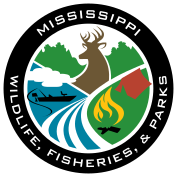
Written by: Chandler Strickland
Edits by: Pierce Young
One of the most frequently asked questions in deer management is, “How many does should I harvest?”
The answer depends on several factors, including available food and cover, current deer density, and the size of your property.
Step 1: Can Your Property Influence the Deer Population?
Before making harvest decisions, it's important to determine if your property is large enough to impact the local deer herd through harvest. As a general rule, properties smaller than 500 to 1,000 acres usually do not alone have enough influence over the broader landscape to drive population trends without cooperation from neighboring landowners.
A common way to increase influence on smaller tracts (<500 acres) is by forming deer management cooperatives with neighbors. By combining harvest data and management strategies across multiple properties, you can affect the deer herd on a large enough scale to improve herd health.
Step 2: Know Your Habitat and Herd
Effective management begins with understanding how many deer your land can support—what biologists call the carrying capacity. You can assess this by:
- Monitoring harvest data (age, sex, weight, and reproductive condition), such as through the Deer Management Assistance Program (DMAP)
- Using exclosure cages in food plots to measure how much forage deer are consuming
- Evaluating browse pressure on native vegetation, and tracking seasonal changes in plant availability (PDF link).
Step 3: Estimate Your Deer Population and Relate it to Habitat
There are some reliable tools to help. Trail camera surveys, observational data, spotlight counts (where legal), when using a scientific protocol, have all been successfully used for decades to estimate deer abundance, sex ratios, and age structure. (Looking forward, drone counts may also become a practical option once research and protocols are finalized).
With these estimates, it is important to compare trends over time with your documented harvest and habitat data.
Step 4: Set Harvest Goals
Long-term research shows that removing 25–33% of the adult does in a population typically stabilizes the herd. Harvesting more than this can reduce deer numbers, while harvesting fewer will likely allow the population to grow. Also, targeting older mature does that are more productive can help reduce the herd, while targeting younger does can ensure it will grow.
Without a population estimate, harvest decisions become more of a guess. However, the following general guidelines can help:
- To reduce the deer herd:
- Harvest >1 adult doe per 25 acres in highly productive areas/great habitat.
- Harvest 1 adult doe per 50-75 acres in moderately productive areas/average habitat.
- Harvest 1 adult doe per 75-100 acres in unproductive areas/poor habitat.
- To maintain the current population:
- Harvest 1 adult doe per 50-75 acres in highly productive areas/great habitat.
- Harvest 1 adult doe per 75-125 acres in moderately productive areas/average habitat.
- Harvest 1 adult doe per 125-150 acres in unproductive areas/poor habitat.
These figures are broad estimates and depend heavily on local factors such as fawn recruitment and habitat quality. Tracking long-term trends in the harvest and habitat data (body weights, exclosure cages, browse surveys) will help you adjust to ensure the deer population is headed in the direction you want.
For more information on deer and other wildlife management visit our webpage:
👉 www.mdwfp.com/wildlife-management-info
Need Help with Deer or Habitat Management on your property?
To schedule a consultation with a wildlife biologist for personalized assistance, go to:
👉 www.mdwfp.com/privatelands